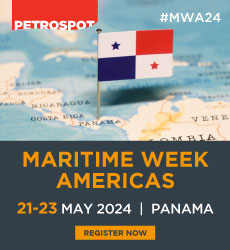While the headlines generated by IMO 2020 have primarily focused on the need for - and availability of – 0.50% sulphur fuels (the main compliance choice), ExxonMobil emphasises that the ramifications of the revised emissions limit go far beyond the top-line for low sulphur fuels.
In this article, the latest in its Fuel for Thought series, ExxonMobil shares its insights on the key factors that vessel operators should consider in the transition to IMO 2020.
Just a few weeks away from implementation, the International Maritime Organization’s (IMO) 2020 sulphur cap continues to create waves throughout the marine industry. The headlines it has generated have primarily focussed on the need for – and availability of – 0.50% sulphur fuels, the main compliance choice. But compliance is only the ticket to the game; the ramifications of the revised emissions limit go far beyond the top-line need for low sulphur fuels.
For vessel operators, bunkering an IMO-compliant fuel is the absolute minimum they need to do to avoid potentially costly downtime, financial penalties and associated reputational damage. Compliance alone, however, may not be sufficient to ensure smooth sailing in 2020. Ultimately, compliance will need to go hand in hand with quality. That’s why leading suppliers have moved away from fuel manufacturing to fuel formulation – understanding the chemistry of available streams and the characteristics of the finished fuels are essential if problems, such as compatibility-related issues, are to be minimised.
Given the likely impact of fuel issues, operators should ensure they only bunker from reputable suppliers. Compliance should be a given – the aim of the game should go further and ensure quality, in the broadest sense. In this context it should include stability, compatibility, combustion characteristics, a fuel’s susceptibility to waxing and the presence of catalytic fines.
In order to achieve this, operators and procurement personnel need to hold their fuel suppliers to account and put their offers and products under the magnifying glass. Looking beyond the sulphur content is crucial as bunkering a poor quality fuel could have serious operational ramifications and implications on the total costs of operations, even if it complies with IMO 2020.
For example, vessels that inadvertently mix non-compatible fuels in tanks, or fail to properly handle their fuel selections on-board, risk disruptive and even dangerous operational situations, including engine blackouts, as well as associated commercial issues. To implement an effective switchover, vessel operators must therefore demand transparency and quality from their supplier, on a consistent basis. Operators should take reassurance from the ongoing technical support and services that suppliers can deliver to help ensure a seamless transition to a low sulphur future.
Fuel management, of course, doesn’t end with the supplier and the procurement of compliant fuel. Operators must strive for consistency on-board their vessels, too – crew training and adherence to storage and handling procedures is still essential, now more than ever.
The global IMO sulphur cap isn’t just about 1 January 2020 – it’s about safe, efficient implementation… now and into the future. The good news is that the lessons learnt during the lead up to 2020 will help prepare the marine industry for future challenges – it’s been a long journey already but it is only just beginning.
For more information on IMO compliance, please visit the company's webpage here.


















